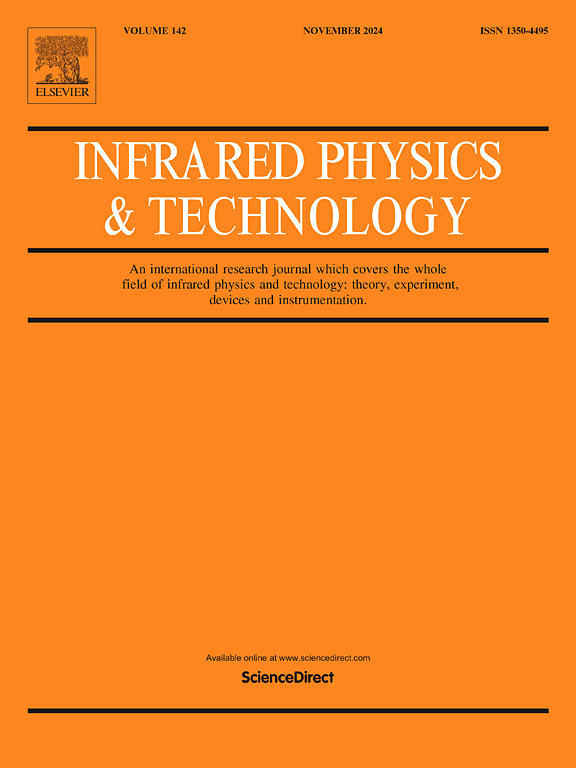超薄表面法布里-珀罗谐振腔自适应辐射冷却的理论研究
IF 3.4
3区 物理与天体物理
Q2 INSTRUMENTS & INSTRUMENTATION
引用次数: 0
摘要
超薄界面表现出与体介质不同的光学和电学特性。对法布里-帕姆罗腔的金属层进行减薄,使连续介质(BICs)在大气窗口内的束缚态光谱展宽,从而促进了其在辐射冷却中的应用。阶梯式超表面的设计进一步拓宽了发射率峰值,以满足所需的冷却功率规格。二氧化钒(VO2)的集成增加了自适应的温度响应能力,形成了在大气窗口和太阳光谱中都有效的四种不同的单元电池结构。通过详细分析这四种单元电池在这些波段上的吸收特性来区分它们的温度响应,同时通过吸收介质的考虑来阐明结构周期性的影响。值得注意的是,“MIV_top结构”表明谐振腔内太阳波段吸收显著减少。这项工作推进了自适应辐射冷却器的设计,特别是增强了它们在可见光谱内的响应。本文章由计算机程序翻译,如有差异,请以英文原文为准。

Adaptive radiative cooling by Fabry-Perot resonators with ultra-thin surface: A theoretical study
The ultra-thin interface exhibits distinct optical and electrical properties diverging from the bulk medium. Thinning the metallic layer of a Fabry-Pérot cavity enables spectral broadening of bound states in the continuum (BICs) within the atmospheric window, thus facilitating its application in radiative cooling.The design of a step metasurface further broadens the emissivity peak to meet the required cooling power specifications. Vanadium dioxide (VO2) integration adds adaptive temperature responsiveness, forming four distinct unit cell configurations active within both the atmospheric window and solar spectrum. The temperature responses of these four unit cells are distinguished through detailed analysis of their absorption properties across these bands, while the impact of structural periodicity is elucidated via absorption medium considerations. Notably, the “MIV_top structure” demonstrates a significant reduction in solar band absorption within the resonant cavity. This work advances the design of adaptive radiative coolers, specifically enhancing their response within the visible spectrum.
求助全文
通过发布文献求助,成功后即可免费获取论文全文。
去求助
来源期刊
CiteScore
5.70
自引率
12.10%
发文量
400
审稿时长
67 days
期刊介绍:
The Journal covers the entire field of infrared physics and technology: theory, experiment, application, devices and instrumentation. Infrared'' is defined as covering the near, mid and far infrared (terahertz) regions from 0.75um (750nm) to 1mm (300GHz.) Submissions in the 300GHz to 100GHz region may be accepted at the editors discretion if their content is relevant to shorter wavelengths. Submissions must be primarily concerned with and directly relevant to this spectral region.
Its core topics can be summarized as the generation, propagation and detection, of infrared radiation; the associated optics, materials and devices; and its use in all fields of science, industry, engineering and medicine.
Infrared techniques occur in many different fields, notably spectroscopy and interferometry; material characterization and processing; atmospheric physics, astronomy and space research. Scientific aspects include lasers, quantum optics, quantum electronics, image processing and semiconductor physics. Some important applications are medical diagnostics and treatment, industrial inspection and environmental monitoring.

 求助内容:
求助内容: 应助结果提醒方式:
应助结果提醒方式:


